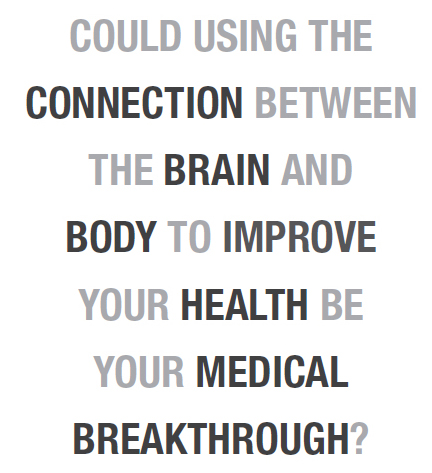
What is the Lightning Process?
The briefest definition I can give of the Lightning Process is that it is ‘a simple, elegant and powerful process designed to teach you how to get a life you love.’
On one level, this statement sums it up very well, and any graduate of the Lightning Process would completely recognize it from this description. And yet it still leaves those taking their first steps into the Lightning Process with more questions than answers. This is the problem with brief, one-line descriptions of complex events because, as Einstein said, ‘Our job is to make things as simple as possible, but no simpler.’
And this very much applies to the Lightning Process. The brief opening definition, although good, doesn’t tell us too much about what the Lightning Process actually is. So let’s try to fill in some of the gaps.
First, we can include some practical aspects by saying that learning the Lightning Process for health consists of three phases:
We can add more details by recognizing that living a life you love involves, for most people, happiness, a sense of fulfillment and wellbeing. This is confirmed not only by common experience, but by recent research1 which finds that happier people live for an average of ten extra, happy, healthy years compared to their less happy counterparts. And this gives us the next piece of the definition: ‘The Lightning Process is designed to teach people a way to use the connection between the brain and body to improve their health.’
And finally, we can also describe ‘the basic elements of the Lightning Process seminar’. The course teaches:
Now we have a much deeper understanding of the Lightning Process, but although this description is useful it clearly can’t stand in for the experience of working through 12 hours of teaching materials and the spontaneity of personally focused training.
I’ve designed the Lightning Process to appear very simple to the seminar’s participants, while also remaining elegant and powerful. However, the structure that lies beneath this process and creates the change – its specific design, individual elements and the teaching of the Lightning Process itself – is extremely complex and sophisticated. This should come as no surprise when you consider that more than a decade of research, experimentation and exploration has gone into creating it. The Lightning Process has been reassessed, stripped down and refined many times over that period.
I’ve used these brief definitions and descriptions and kept them incomplete on purpose as this is actually an important part of making change. This is especially the case if you’ve been stuck somewhere in your life for a long time. To understand why this rather strange statement is true, we need to begin with some understanding of how the brain works.
Our brains naturally process information by looking for patterns and familiarity (technically called apophenia) and this is a valuable skill for learning and survival. You can notice this pattern recognition in action yourself.

Take a quick look at the images on the previous page and note what you see in them. We will all automatically and unconsciously see these images as faces, although they actually bear little resemblance to any of the elements of the human face. Yet our pattern recognition neurology makes us see them as faces. This kind of ability allows us to predict things based on a combination of:
To illustrate this, I’d like you to imagine that we live in a village surrounded by a wood. We know from past experience that dangerous beasts live in the wood. When we think about going into the wood, we know to take a spear (or someone who can’t run as fast as us!) to prepare us for the possibility of meeting the dangerous beasts.
Unfortunately, this brain function can also hold us back because it can create wrong or inaccurate predictions. This is especially the case when situations have changed yet we continue to apply our old evaluations to them. For example, if we know that dangerous beasts have been found in the wood we might continue to avoid the wood long after the beasts have left. We could possibly avoid any new woods we find, even those filled with plants laden with easily harvestable foods, because we fear that they might be inhabited by similarly dangerous beasts.
In this case, the incorrect assumption is that new things (the new woods) are similar to old things (the old wood) that we’ve experienced before. This forces us to treat them as the same kind of thing and we put the new things (the new woods) into a category (dangerous) that they don’t necessarily fit into.
Those of you familiar with spell-checkers or predictive text on mobile phones will know how those electronic brains try to predict which word you are looking to use, and make presumptions based on the first few letters and the words that are most commonly used by you. Sometimes this is really helpful for making our documents accurate and our typing faster, but at other times, when it predicts incorrectly, it makes our documents inaccurate, our typing slower and can be very irritating.
In the past when I provided people with an extremely detailed description of the Lightning Process I found that they immediately began to categorize it based on what they already knew, putting it into a pigeonhole of something they could categorize.
This is reasonable but, of course, problematic. For example, if someone is personally trying to resolve a long-term problem (such as depression) and already knows about a set of solutions such as life coaching or Neuro-linguistic Programming (NLP), then it means these solutions either haven’t worked for them or, in their mind, they are inappropriate for use with those ‘stuck’ issues.
If they put the Lightning Process in the same pigeonhole as the unsuccessful approach by thinking, ‘The Lightning Process sounds like life coaching to me’, they will dismiss it out of hand because they think it’s the same sort of thing. Obviously this kind of thinking is reasonable, but not always helpful.
The Lightning Process was designed with some reference to a number of different approaches. These include NLP, life coaching and osteopathy, but this isn’t an exhaustive list. It’s vital to notice that, although you might be able to see some slight similarities between the Lightning Process and other approaches, it should be viewed as something unique, something that doesn’t quite fit with what you already know.
One of the core ways it displays its fundamental difference to other approaches is that it gets such different results from them.
Many people who take a training seminar in the Lightning Process have often visited excellent practitioners of NLP, life coaching and osteopathy, etc., but the combination of these approaches hasn’t helped them to make the changes they desire. When they apply the Lightning Process, however, they find they can get the changes that had previously eluded them. I recommend that you keep this idea in your mind throughout your exploration of the Lightning Process. If you find yourself comparing it to something else you’ve tried that hasn’t worked, just pause and remind yourself of the examples of the face and the wood, and know that this is different.

In this chapter you can get a sense of how the book will steer you through the first steps of the Lightning Process, working to get you thinking about what’s possible in those areas where nothing seems to change. Looking at the science behind how the brain, mind and body connect; helping you stretch your vision of the world and explore what kind of future you’d like.
For many, even the idea that change is possible – especially when they’ve been stuck for a long time – is a huge part of the journey to wellness itself. For others, the journey is to discover the idea that they could have some influence on something that has seemed to be beyond their control. And for others still, the goal is to believe that they could use those tools effectively. All these realizations and more can be achieved by working through the first steps in this book, which are essential because without them the route to lasting change will unfortunately be a very hard one, and nobody wants that.
Instead, use this book to wake up to change. After all, philosophers have long considered change (along with death and taxes!) to be one of life’s few constants. As Heraclitus wrote, ‘Nothing endures but change’.
Moreover, scientists consider one of the fundamental driving forces of the universe to be ‘entropy’ – the tendency of everything to change towards a more simple form.
Engaging with the contents and the exercises in this book will begin to stimulate those parts of your brain that know all about change and, like rolling a snowball down a steep snow-covered hillside, just a small initial movement can produce a huge result.
Take a moment to write down the details of a time when you experienced spontaneous change in your life: when watching a film, reading a book, learning something or being around someone led you to see things differently. Noting down what you saw, heard and felt at that time will help to make that memory even stronger and this will help to remind you of how possible and spontaneous change can be.